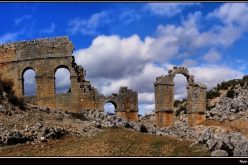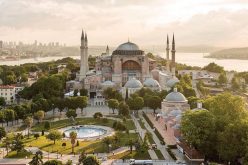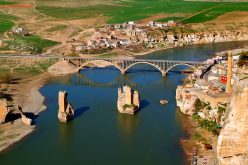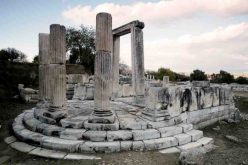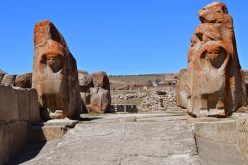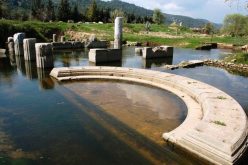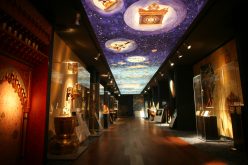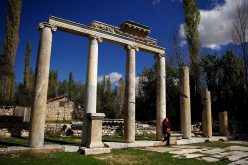Laodikeia
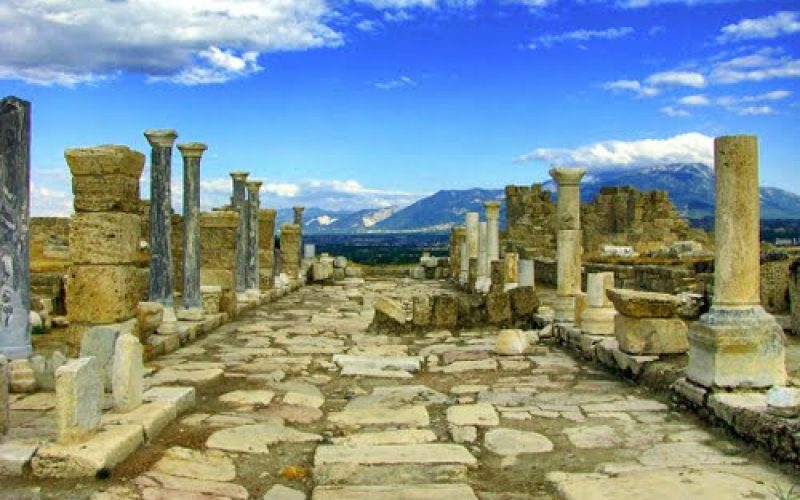
Laodikeia
Laodikeia (Laodicea) is located six km north of the modern city of Denizli, within the borders of the villages of Eskihisar, Goncalı, Korucuk and Bozburun. The site is on the road to Pamukkale (Hierapolis), which is approximately ten km to the north.
Laodikeia is one of the important archaeological remains for the region along with Hierapolis (Pamukkale) and Tripolis. The city is surrounded by necropolises. Excavations at Laodikeia show that the city was settled continuously from the Chalcolithic Period (Copper Age, 5500 BCE) to the 7th century CE. The name of the city was originally “Diopolis” (City of Zeus) and then “Rhodas” (Asopos Hill). In the middle of the third century BC., the Hellenistic city was established by Antiochus II of Syria (261-246 BCE) in the region and it was named “Laodikeia” after his wife Laodice.
The region became part of the kingdom of Pergamon. Later, the city was connected to the Roman Empire in 130-129 B.C. Laodikeia was one of the Seven Churches (seven major churches of Early Christianity: Ephesus, Smyrna, Pergamum, Thyatira, Sardis, Philadelphia, and Laodicea), names in the Book of Revelation. It became a metropolitan city in the early Byzantine period. Christianity began to spread into the area beginning in the second half of the first century CE. The city became famous as a Christian center and a place of religious pilgrimage in the Early Byzantine period. The Council of Laodikeia, a regional synod of clerics assembled from Asia Minor, was held here in 364 CE.
The city of Laodikeia was situated at the crossroads of main routes that connect western, central and southern Anatolia. It was linked to major trade routes and flourished as a commercial center. According to Strabo, a type of black wool sheep, known for its softness, was raised in Laodikeia. Wool and textile industries made Laodikeia one of the wealthiest cities in Asia Minor. Besides textile industry, marble, grain and livestock commerce also provided an important income to the city. The city’s active trade played an important role in the spread of the Christian gospel to the region. The golden age of the city was from the first to fifth centuries CE. Most of the structures and the city itself were developed during this period. The city was destroyed by a big earthquake in 60 AD. Laodikeia declined after the Seljuks conquered the city in the late 11th century. In the 13th century, the remaining inhabitants abandoned the site and moved to Ladik (modern-day Denizli).
Excavations and restorations in Laodikeia have been conducted since 2003 on behalf of the Turkish Ministry of Culture and Tourism as well as Pamukkale University under the directorship of Prof. Celal Simsek. After 2008, excavations and restorations were conducted year-round and completed in 2015. As a result, total 3663 works including the following monuments were unearthed and mostly restored: the largest ancient stadium of Anatolia (measuring 285 x 70m), two theaters (Western and Northern Theatres), four bath complexes (East, Central, West and East Roman baths), five agoras (East, Central, West, South and North Agoras), five fountains (nymphaea; East Byzantine, Caracalla, Septimus Severus, B and West Fountains), two monumental portals (Ephesus and Syria Gates), a council house (bouleuterion), houses with a Peristyle design (House A Complexes, Peristyle House with Church), temples (Temple A), churches (East, North, West, Central, Southwest Churches and Laodikeia Church), public latrines, two large water distribution terminals and monumental colonnaded streets (Syria, Ephesus, Stadium Streets). The Laodikeia Church, founded in the early fourth century CE, was discovered in 2010. Excavations and restorations of this large basilica structure have almost been completed in the past two years.
Related Articles
Write a Comment
Only registered users can comment.




